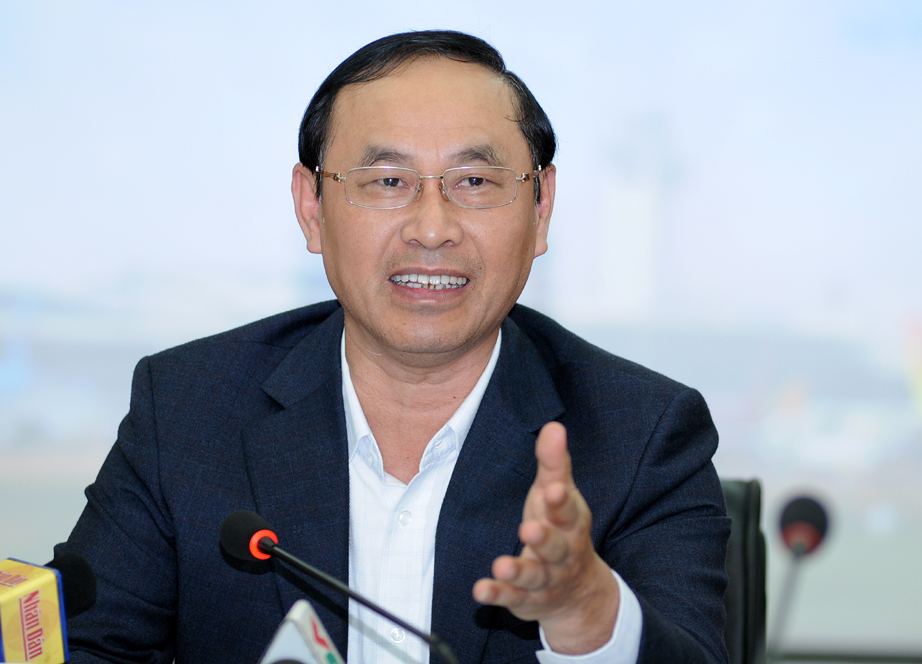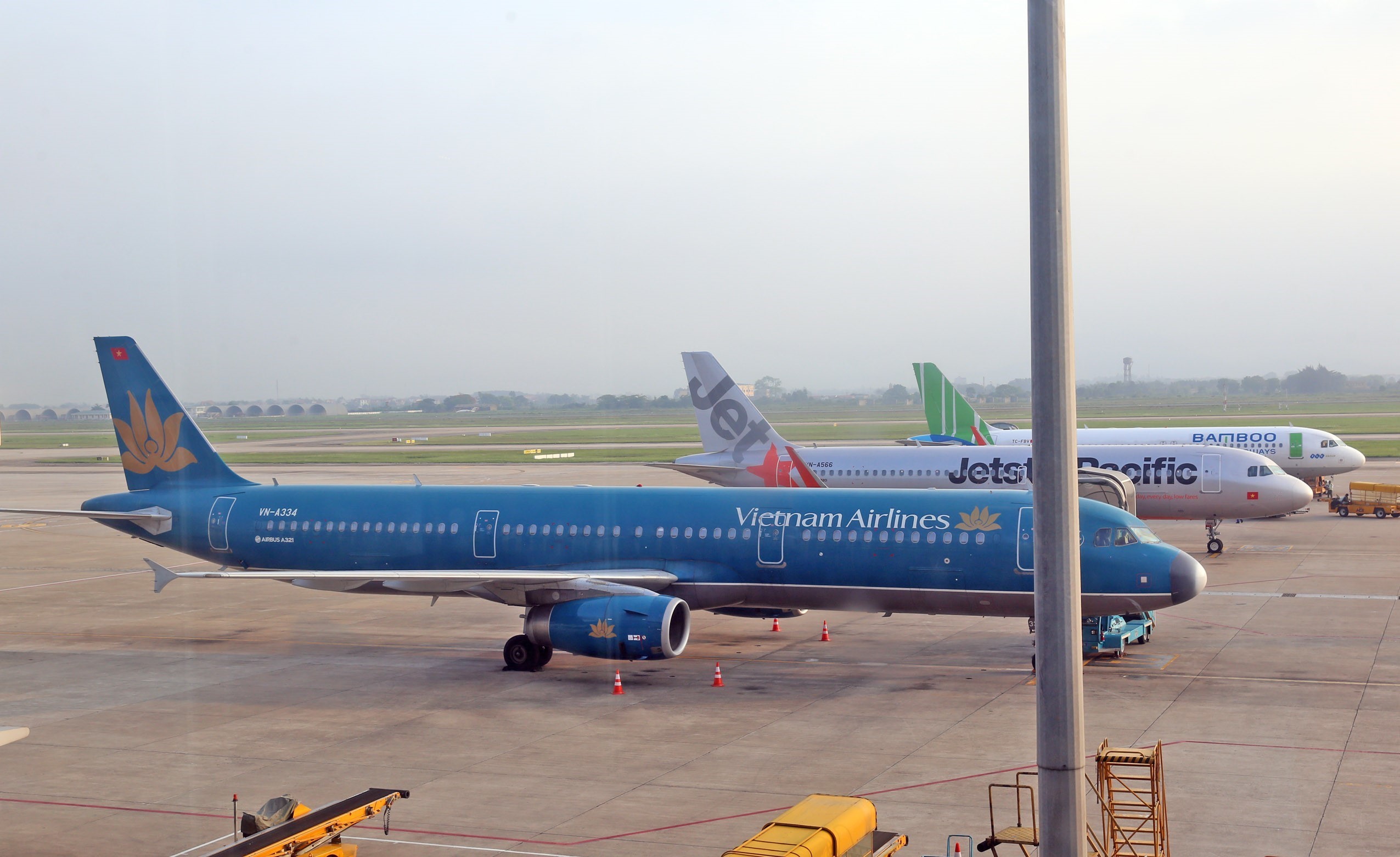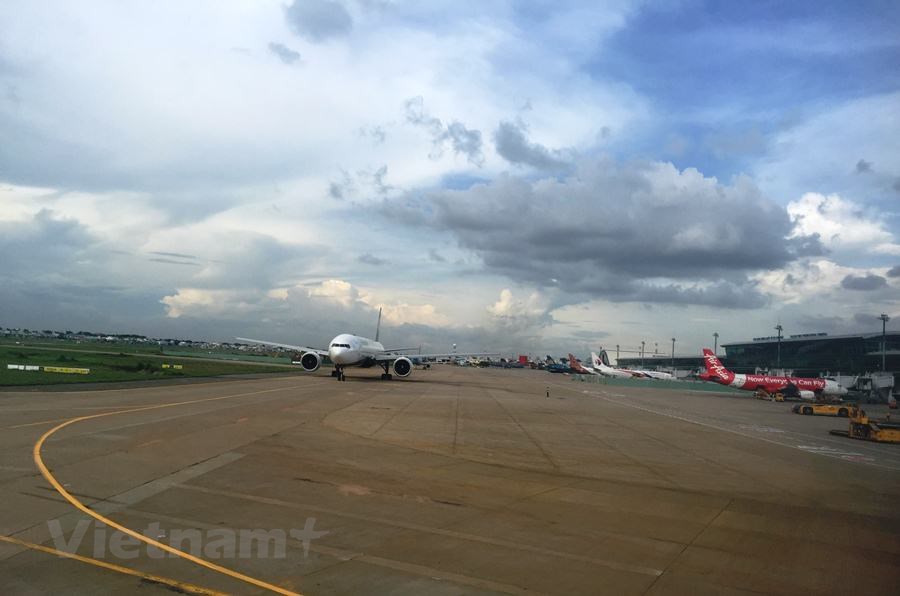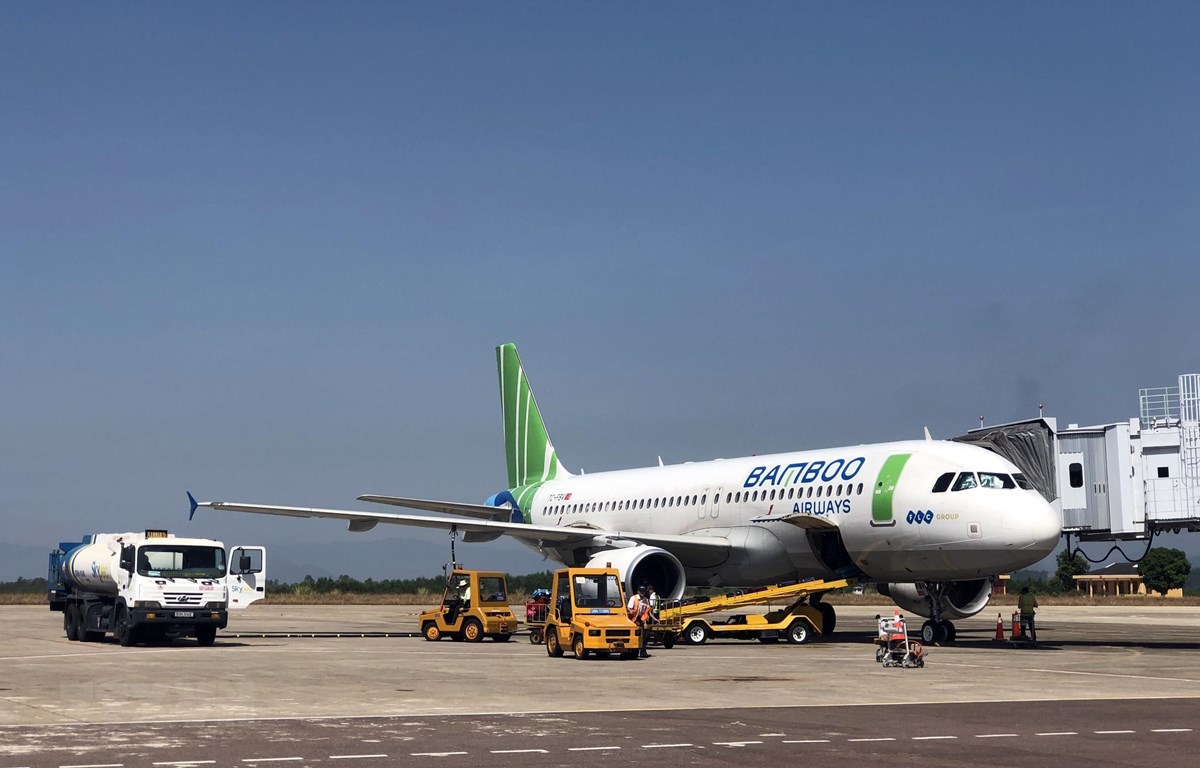The Vietnamese aviation market has experienced double-digit growth in recent years and domestic carriers have increased their fleet rapidly, leaving the transport sector’s fight safety monitoring capacity lagging behind growth pace.
Deputy Minister of Transport Le Dinh Tho spoke to VietnamPlus on this issue.
Closely monitoring aircraft fleet development plans
Reporter: Bamboo Airways has proposed the Prime Minister approve a project to expand its fleet, although the carrier has only operated at the Tan Son Nhat International Airport since its inception four months ago.
Is this how Bamboo Airways hopes to overcome airport-related pressure and reduce the management capacity of the Civil Aviation Authority of Vietnam in the context that Vietstar will not be granted an aviation transportation business licence until the Tan Son Nhat International Airport is expanded?
Deputy Minister Le Dinh Tho: The Prime Minister issued Decision No. 836/QD-TTg dated July 9, 2018 approving the investment plan of the Bamboo Airway aviation transportation project for 2019-2023 with total investment hitting 700 billion VND (30.1 million USD) and a fleet of 10 aircraft of A320/A32 or B737.
The Ministry of Transport then granted a licence to Bamboo Airways, which now boasts a fleet of 10 aircraft of A319/320/321 operating 20 air routes, including six to and from Ho Chi Minh City, ten between Hanoi and Da Nang, Quy Nhon, Quang Binh, Vinh, Phu Quoc, Nha Trang, Buon Ma Thuot, Can Tho, Pleiku and Da Lat, and four between Hai Phong and Vinh, Da Lat and Buon Ma Thuot. The carrier uses 13 airports.
As of April, Bamboo Airways had operated more than 3,700 safe flights with 430,000 passengers and the rate of on-time flights at 93.5 percent, the highest figure among domestic airlines.
The newly-established carrier has proven its aviation transportation business capacity.
During its operation, Bamboo Airways has observed legal regulations, ensured security, safety and aviation service quality, while thoroughly preparing human resources. The carrier has proven its aviation transportation business capacity although it was formed a short time ago.
The Transport Ministry recognised that the airline’s proposal to increase its fleet to more than 30 aircraft and expand domestic and international air routes is the carrier’s wish.
This plan will help intensify connectivity with new foreign markets as well as boost inter-regional tourism connectivity in Vietnam, improve international competitiveness of domestic airlines, and make the best use of existing aviation infrastructure.
The plan also matches the goals to develop air routes and airports set in relevant projects approved by the Prime Minister.
However, the Transport Ministry and the Civil Aviation Authority of Vietnam acknowledge the carrier’s plan to develop its aircraft fleet and total investment have exceed the amounts set in the Bamboo Airway aviation transportation project previously approved by the PM.
Therefore, the ministry has requested Bamboo Airways to devise a project asking for business adjustments and submit it to the Ministry of Planning and Investment and the PM.
Based on the PM’s instructions, Vietnam’s aviation infrastructure and human resources and the monitoring capacity of the Civil Aviation Authority of Vietnam, the Transport Ministry and the Civil Aviation Authority of Vietnam will consider re-granting an aviation transportation business licence to Bamboo Airways.

Reporter: What is the responsibility of the Transport Ministry and the Civil Aviation Authority of Vietnam in supervising the performance of airlines in their aircraft fleet development plans?
Deputy Minister Le Dinh Tho: The Transport Ministry and the Civil Aviation Authority of Vietnam have inspected the development of aircraft fleet of airlines in accordance with Government Decree No. 92/2016/ND-CP dated July 1, 2016.
Airlines devise, report and implement five-year plans, ensuring the synchronous development of airports, resources in service of their operation and maintenance activities, flight safety monitoring capacity of competent authorities, environmental protection and sustainable development.
The Civil Aviation Authority of Vietnam is keeping a close watch on aircraft fleet development plans of all Vietnamese airlines, including Bamboo Airways.
Bamboo Airways has completed all of its targets set in the Bamboo Airway aviation transportation project approved by the PM and is still under the supervision of the Transport Ministry and the Civil Aviation Authority of Vietnam.
Reporter: With its present fleet and network of routes, is Bamboo Airways eligible to receive a new aviation transportation business licence?
Deputy Minister Le Dinh Tho: Bamboo Airways’ proposal for a new aviation transportation business licence will affect the sustainable development of the aviation sector in some aspects.
Firstly, it is crucial for a new airline to operate inbound flights at the Tan Son Nhat International Airport. However, due to its overload, Tan Son Nhat has not allowed new carriers to launch flights to the airport until 2022.

The rapid development of Vietnamese airlines as well as the increasing number of aircraft have led to a shortage of pilots, technicians and mechanics.
Secondly, the operation of new airlines will likely put huge pressure on domestic aviation infrastructure and increase overloading at airports like Noi Bai, Da Nang, Cam Ranh and Tan Son Nhat, harming service quality.
Thirdly, the rapid development of Vietnamese airlines as well as the increasing number of aircraft have led to a shortage of pilots, technicians and mechanics.
The shortage is a concern for not only Vietnamese airlines but also the Transport Ministry and the Civil Aviation Authority of Vietnam regarding how to ensure flight safety as well as national defence and security.
Fourth, the birth of new airlines will put more pressure on the Civil Aviation Authority of Vietnam in the monitoring work. Given its limited financial and human resources, the agency will find it hard to meet the demand for aircraft of existing airlines, let alone new carriers. This would pose huge risks to ensuring flight safety.
For such reasons, the Transport Ministry and the Civil Aviation Authority of Vietnam will think twice about granting new aviation transportation business licences based on the scale and capacity of businesses and conformity with the domestic aviation infrastructure, monitoring capacity of the authority and adjustments to aviation transportation development planning.
Improving flight safety monitoring capacity
Reporter: In 2019, the Civil Aviation Authority of Vietnam is capable of managing 256 aircraft. However, Bamboo Airways’ proposal to raise its fleet to more than 30 aircraft exceeds the authority’s monitoring capacity.
Many wonder whether limited monitoring capacity has hindered the development of the domestic aviation sector. If Bamboo Airways is allowed to increase its fleet, how many aircraft should the carrier add to match the authority’s capacity?
Deputy Minister Le Dinh Tho: In early 2019 , the Civil Aviation Authority of Vietnam received a category 1 aviation safety rating from the US Department of Transportation’s Federal Aviation Administration. This means the authority meets International Civil Aviation Organisation (ICAO) standards.
The Civil Aviation Authority of Vietnam is keeping a close watch on aircraft fleet development plans of all Vietnamese airlines, including Bamboo Airways.
To get the recognition, the authority has carried out a human resources plan for 2017-2022, under which its staff will monitor 256 aircraft of Vietnamese airlines in 2019, 276 in 2020 and more than 400 in 2030.
Rapid increases of airlines and planes have prompted the Civil Aviation Authority of Vietnam to recruit more workers, which is not included in the plan and takes time.
Based on evaluations of the capacity and experience of Bamboo Airways and its plan’s feasibility, as well as the development of the aviation market, local aviation infrastructure and Vietnam’s aviation safety capacity, the authority has proposed allowing 12 new aircraft in Bamboo Airways’ fleet as compared with 10 set in the Bamboo Airway aviation transportation project, raising its fleet to 22 aircraft.

Reporter: What specific measures are taken by the Civil Aviation Authority of Vietnam to raise monitoring capacity? How long does it take to do it?
Deputy Minister Le Dinh Tho: The Transport Ministry has instructed the Civil Aviation Authority of Vietnam to continue completing legal documents regarding aviation safety, meeting international standards and matching Vietnam’s reality.
Besides, the authority has stepped up the application of technologies in administrative management, and the building and analysis of the aviation safety database.
The ministry has also asked the authority to devise plans and implement human resources solutions to ensure the quality and quantity set in the aviation transportation development planning scheme.
Reporter: It is hard to get a category 1 aviation safety rating from the US Department of Transportation’s Federal Aviation Administration and even harder to maintain it. What will the Transport Ministry and the Civil Aviation Authority of Vietnam do to keep the title?
Deputy Minister Le Dinh Tho: The Transport Ministry has asked the Civil Aviation Authority of Vietnam to maintain its safety system that meets requirements of the International Civil Aviation Organisation and the US Department of Transportation’s Federation Aviation Administration.
Besides, the agency will improve its capacity in terms of infrastructure, stay updated on relevant legal documents, build a database of aviation safety across spheres, step up personnel training and conduct aviation safety inspections.-VNA

